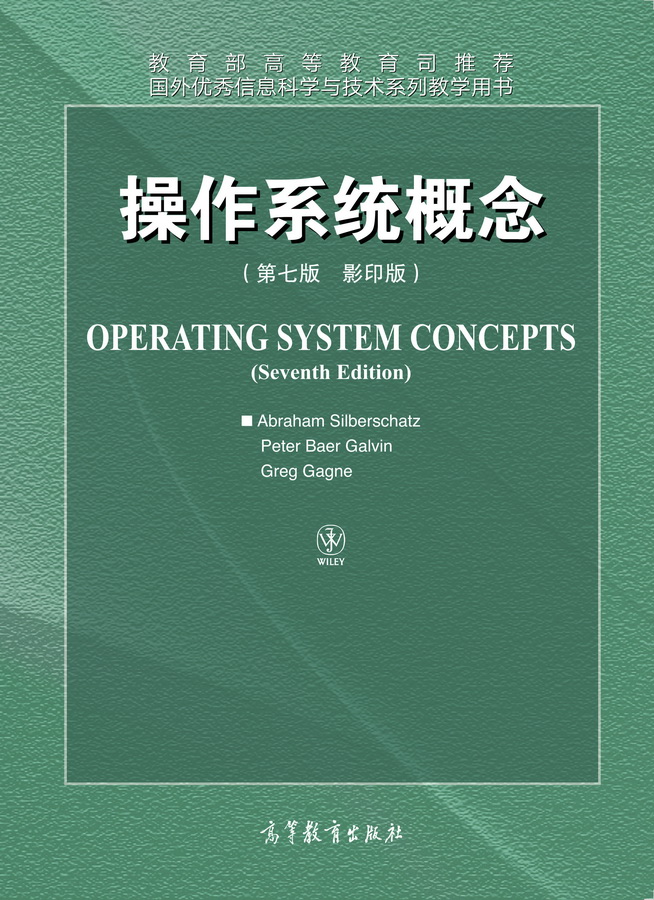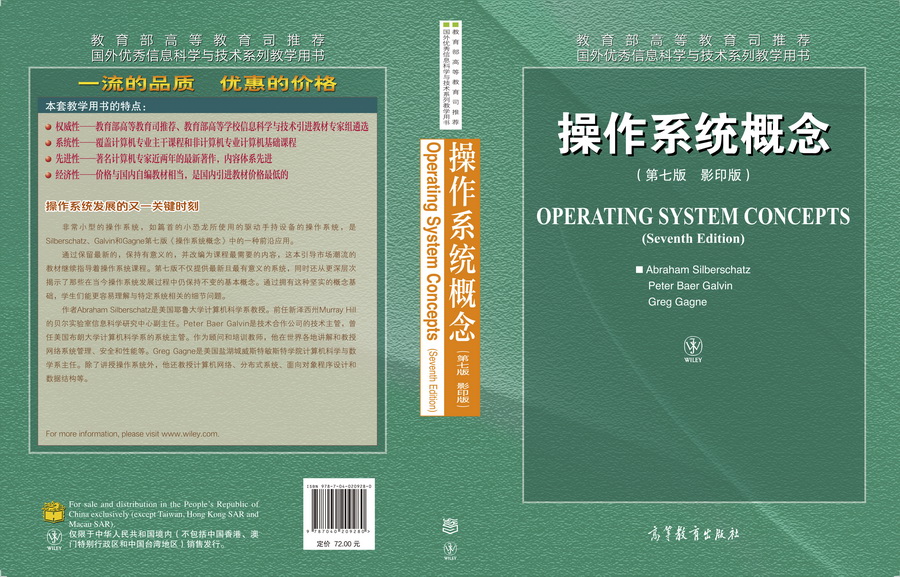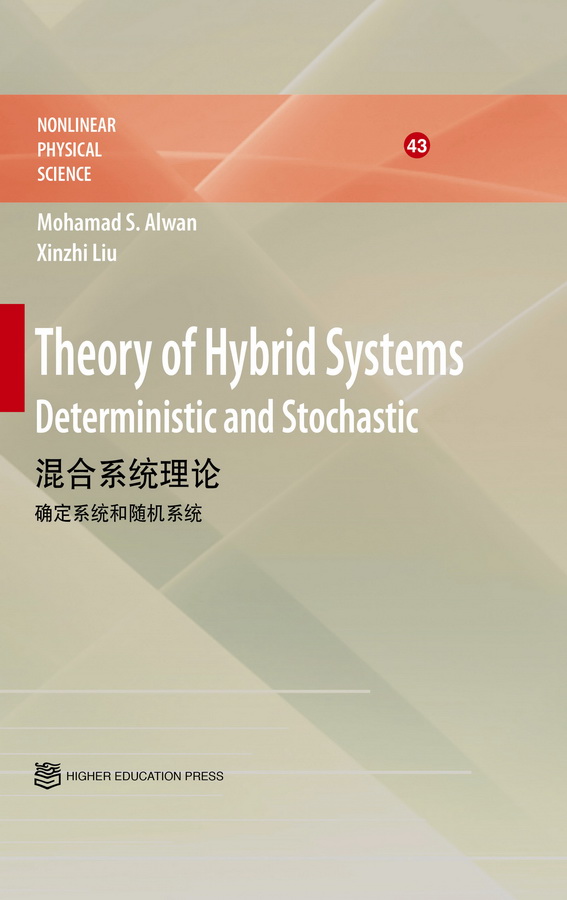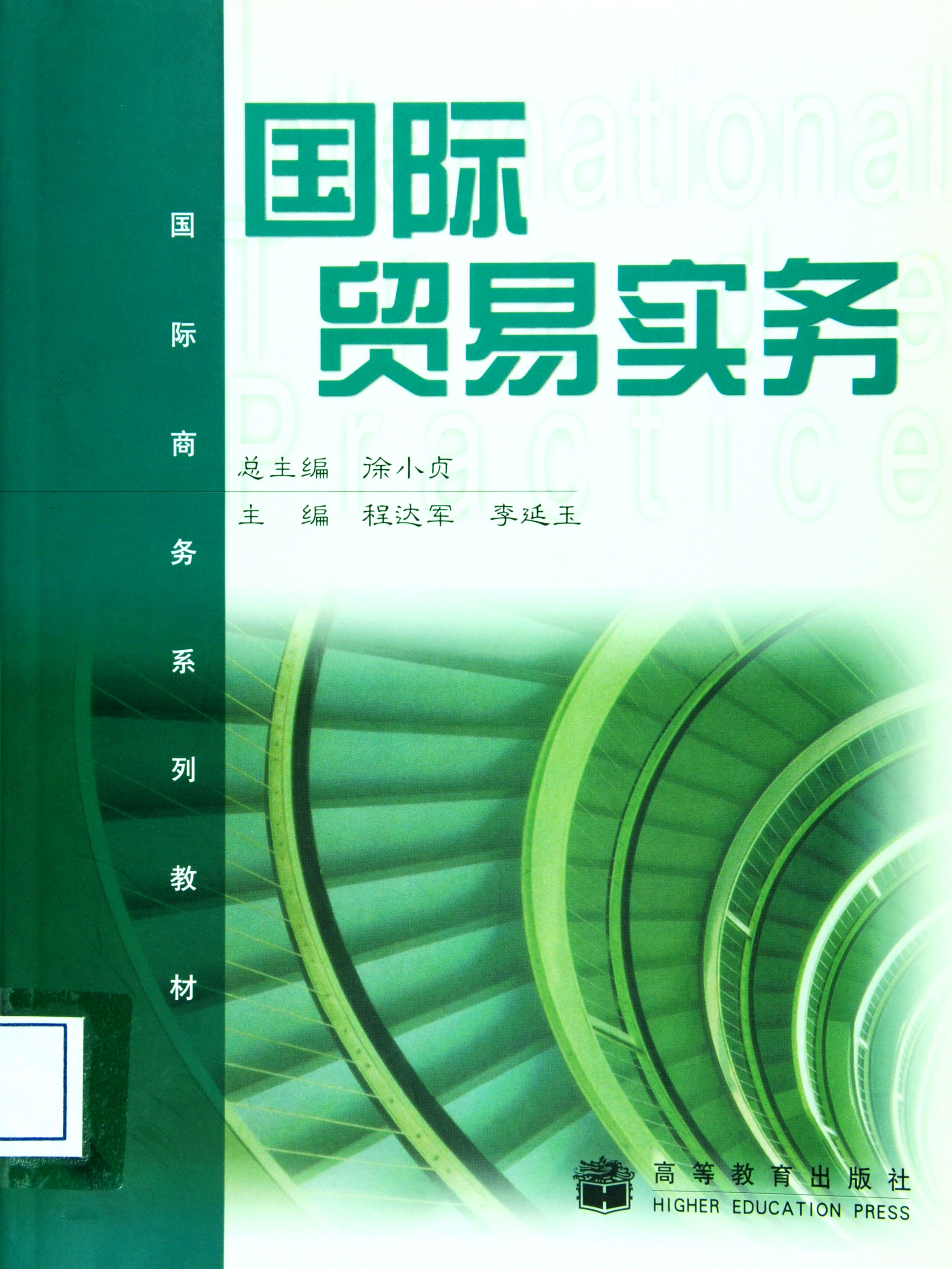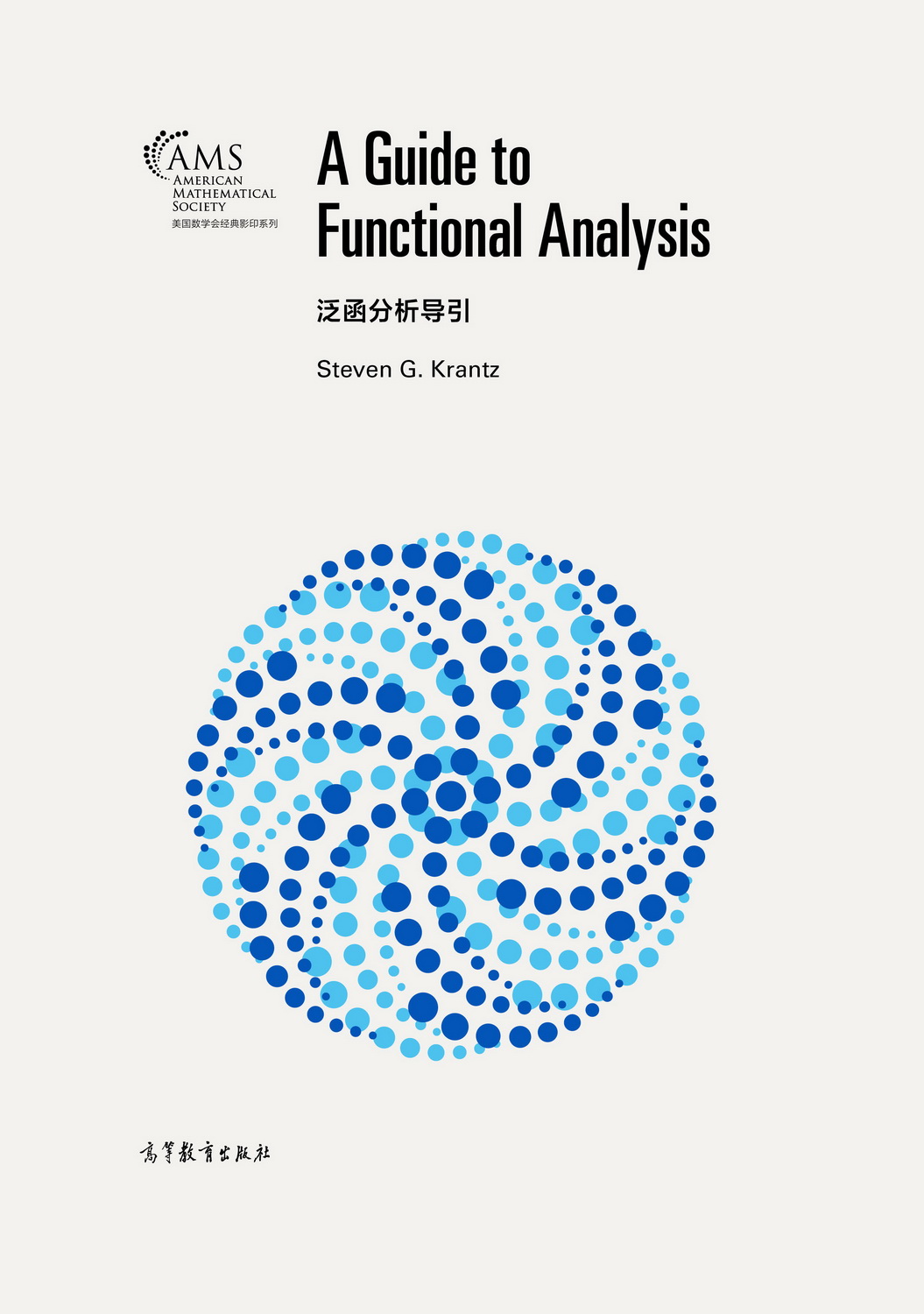操作系统概念(第七版 影印版)
¥72.00定价
作者: Abraham Silberschatz等
出版时间:2007-03-19
出版社:高等教育出版社
- 高等教育出版社
- 9787040209280
- 1
- 43103
- 44211903-8
- 平装
- 异16开
- 2007-03-19
- 1190
- 921
- 工学
- 软件工程
- TP316
- 计算机科学与技术
- 研究生、本科
目录
PART ONE OVERVIEW
Chapter I Introduction
1.1 What Operating Systems Do
1.2 Computer-System Organization
1.3 Comvuter-Svstem Architecture
1.4 Operating-System Structure
1.5 Operating-System Operations
1.6 Process Management
1.7 Memory Management
1.8 Storage Management
1.9 Protection and Security
1.10 Distributed Systems
1.11 Special-Purpose Systems
1.12 Computing Environments
1.13 Summary
Exercises
Bibliographical Notes
Chapter 2 Operating-System Structures
2.1 Operating-System Services
2.2 User Operating-System Interface
2.3 System Calls
2.4 Types of System Calls
2.5 System Programs
2.6 Operating-System Design and
Implementation
2.7 Operating-System Structure
2.8 Virtual Machines
2.9 Operating-System Generation
2.10 System Boot
2.11 Summary
Exercises
Bibliographical Notes
PART TWO PROCESS MANAGEMENT
Chapter 3 Processes
3.1 Process Concept
3.2 Process Scheduling
3.3 Operations on Processes
3.4 Interprocess Communication
3.5 Examples of IPC Systems
3.6 Communication in Client-
Server Svstems
3.7 Summary
Exercises
Bibliographical Notes
Chapter 4 Threads
4.1 Overview
4.2 Multithreading Models
4.3 Thread Libraries
4.4 Threading Issues
4.5 Operating-System Examples
4.6 Summary
Exercises
Bibliographical Notes
Chapter 5 CPU Scheduling
5.1 Basic Concepts
5.2 Scheduling Criteria
5.3 Scheduling Algorithms
5.4 Multiple-Processor Scheduling
5.5 Thread Scheduling
5.6 Operating System Examples
5.7 Algorithm Evaluation
5.8 Summary
Exercises
Bibliographical Notes
Chapter 6 Process Synchronization
6.1 Background
6.2 The Critical-Section Problem
6.3 Petersons Solution
6.4 Synchronization Hardware
6.5 Semaphores
6.6 Classic Problems of
Synchronization
6.7 Monitors
6.8 Synchronization Examples
6.9 Atomic Transactions
6.10 Summary
Exercises
Bibliographical Notes
Chapter 7 Deadlocks
7.1 System Model
7.2 Deadlock Characterization
7.3 Methods for Handling Deadlocks
7.4 Deadlock Prevention
7.5 Deadlock Avoidance
7.6 Deadlock Detection
7.7 Recovery From Deadlock
7.8 Summary
Exercises
Bibliographical Notes
PART THREE MEMORY MANAGEMENT
Chapter 8 Main Memory
Chapter 9 Virtual Memory
PART FOUR STORAGE MANAGEMENT
Chapter 10 File-System Interface
Chapter 11 File-System Implementation
Chapter 12 Mass-Storage Structure
Chapter 13 I/O Systems
PART FIVE PROTECTION AND SECURITY
Chapter 14 Protection
Chapter 15 Security
PART SIX DISTRIBUTED SYSTEMS
Chapter 16 Distributed System Structures
Chapter 17 Distributed File Systems
Chapter 18. Distributed Coordination
PART SEVEN SPECIAL-PURPOSE SYSTEMS
Chapter 19 Real-Time Systems
Chapter 20 Multimedia Systems
PART EIGHT CASE STUDIES
Chapter 21 The Linux System
Chapter 22 Windows XP
Chapter 23 Influential Operating Systems
Appendix A UNIX BSD (contents online)
Appendix B The Mach System (contents online)
Appendix C Windows 2000 (contents online)
Chapter I Introduction
1.1 What Operating Systems Do
1.2 Computer-System Organization
1.3 Comvuter-Svstem Architecture
1.4 Operating-System Structure
1.5 Operating-System Operations
1.6 Process Management
1.7 Memory Management
1.8 Storage Management
1.9 Protection and Security
1.10 Distributed Systems
1.11 Special-Purpose Systems
1.12 Computing Environments
1.13 Summary
Exercises
Bibliographical Notes
Chapter 2 Operating-System Structures
2.1 Operating-System Services
2.2 User Operating-System Interface
2.3 System Calls
2.4 Types of System Calls
2.5 System Programs
2.6 Operating-System Design and
Implementation
2.7 Operating-System Structure
2.8 Virtual Machines
2.9 Operating-System Generation
2.10 System Boot
2.11 Summary
Exercises
Bibliographical Notes
PART TWO PROCESS MANAGEMENT
Chapter 3 Processes
3.1 Process Concept
3.2 Process Scheduling
3.3 Operations on Processes
3.4 Interprocess Communication
3.5 Examples of IPC Systems
3.6 Communication in Client-
Server Svstems
3.7 Summary
Exercises
Bibliographical Notes
Chapter 4 Threads
4.1 Overview
4.2 Multithreading Models
4.3 Thread Libraries
4.4 Threading Issues
4.5 Operating-System Examples
4.6 Summary
Exercises
Bibliographical Notes
Chapter 5 CPU Scheduling
5.1 Basic Concepts
5.2 Scheduling Criteria
5.3 Scheduling Algorithms
5.4 Multiple-Processor Scheduling
5.5 Thread Scheduling
5.6 Operating System Examples
5.7 Algorithm Evaluation
5.8 Summary
Exercises
Bibliographical Notes
Chapter 6 Process Synchronization
6.1 Background
6.2 The Critical-Section Problem
6.3 Petersons Solution
6.4 Synchronization Hardware
6.5 Semaphores
6.6 Classic Problems of
Synchronization
6.7 Monitors
6.8 Synchronization Examples
6.9 Atomic Transactions
6.10 Summary
Exercises
Bibliographical Notes
Chapter 7 Deadlocks
7.1 System Model
7.2 Deadlock Characterization
7.3 Methods for Handling Deadlocks
7.4 Deadlock Prevention
7.5 Deadlock Avoidance
7.6 Deadlock Detection
7.7 Recovery From Deadlock
7.8 Summary
Exercises
Bibliographical Notes
PART THREE MEMORY MANAGEMENT
Chapter 8 Main Memory
Chapter 9 Virtual Memory
PART FOUR STORAGE MANAGEMENT
Chapter 10 File-System Interface
Chapter 11 File-System Implementation
Chapter 12 Mass-Storage Structure
Chapter 13 I/O Systems
PART FIVE PROTECTION AND SECURITY
Chapter 14 Protection
Chapter 15 Security
PART SIX DISTRIBUTED SYSTEMS
Chapter 16 Distributed System Structures
Chapter 17 Distributed File Systems
Chapter 18. Distributed Coordination
PART SEVEN SPECIAL-PURPOSE SYSTEMS
Chapter 19 Real-Time Systems
Chapter 20 Multimedia Systems
PART EIGHT CASE STUDIES
Chapter 21 The Linux System
Chapter 22 Windows XP
Chapter 23 Influential Operating Systems
Appendix A UNIX BSD (contents online)
Appendix B The Mach System (contents online)
Appendix C Windows 2000 (contents online)

